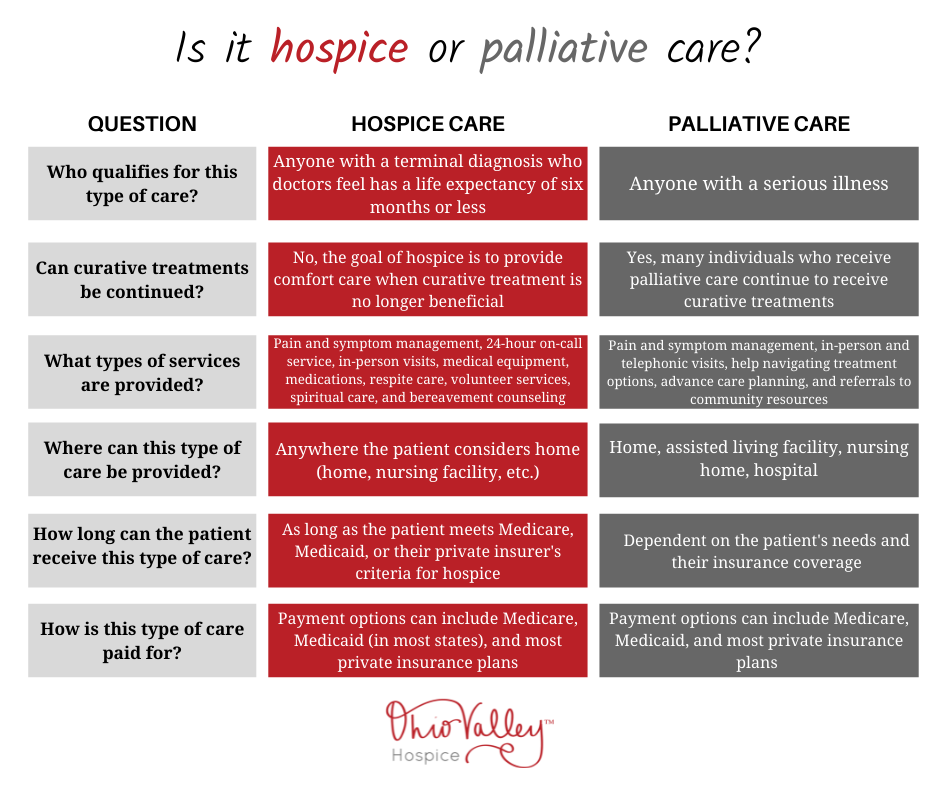
Hospice and Palliative Care: What’s the Difference?
The terms ‘hospice’ and ‘palliative’ care often get confused. Although they are similar, there are differences between these two types of care.
What is hospice care?
The focus of hospice care is on quality of life when a cure is no longer possible or when the burden of treatment outweighs the benefits. In general patients receiving hospice services have a life-expectancy of six months or less if the illness runs its usual course. Many people think hospice care is just for elderly people or cancer patients, but that is not the case. Hospice benefits people of any age, with any life-limiting illness. The goal of hospice is to provide comfort care by managing pain as well as providing emotional and spiritual support to the patient and their family.
Where is hospice care provided, and who is involved?
Hospice care can be provided anywhere the patient calls home, including nursing facilities in which they may reside. It involves an interdisciplinary team that includes:
- A hospice physician (or medical director)
- Nurses
- Certified Nursing Assistants
- Social workers
- Chaplains or other spiritual support
- Bereavement coordinators or counselors
- Volunteers
What will the hospice team do?
The interdisciplinary hospice team will focus on things like:
- Pain and symptom management
- Emotional support
- Providing medication, medical supplies, and equipment
- Educating caregivers on how to care for the patient
- Grief support
What is palliative care?
Palliative care, like hospice, focuses on quality of life. The difference is that palliative care is appropriate at any stage of a serious illness, not just at end-of-life. It’s an extra layer of support that treats the symptoms of an illness and supports the entire family. Patients who are receiving palliative care can continue to receive curative care such as chemotherapy, radiation, dialysis, and surgery.
Where is palliative care provided, and who is involved?
Patients can receive palliative care in settings such as hospitals, nursing homes, specialized clinics, and at home from a team of specially trained doctors, nurses, and other specialists. This team will work closely with the patient, their family and caregivers, and the patient’s other doctors to ensure everyone is on the same page.
What will the palliative care team do?
The palliative care team offers services such as:
- Pain and symptom management
- Care coordination with the patient’s current healthcare team (i.e. physician)
- Assist with care plan development
- Practical help with completing forms and making decisions about care
- Help with advance directives
A side-by-side comparison of hospice and palliative care
The chart below can be used to help gain a better understanding of the difference between hospice and palliative care.
Please contact us if you have any questions about the quality hospice services Ohio Valley Hospice provides.




